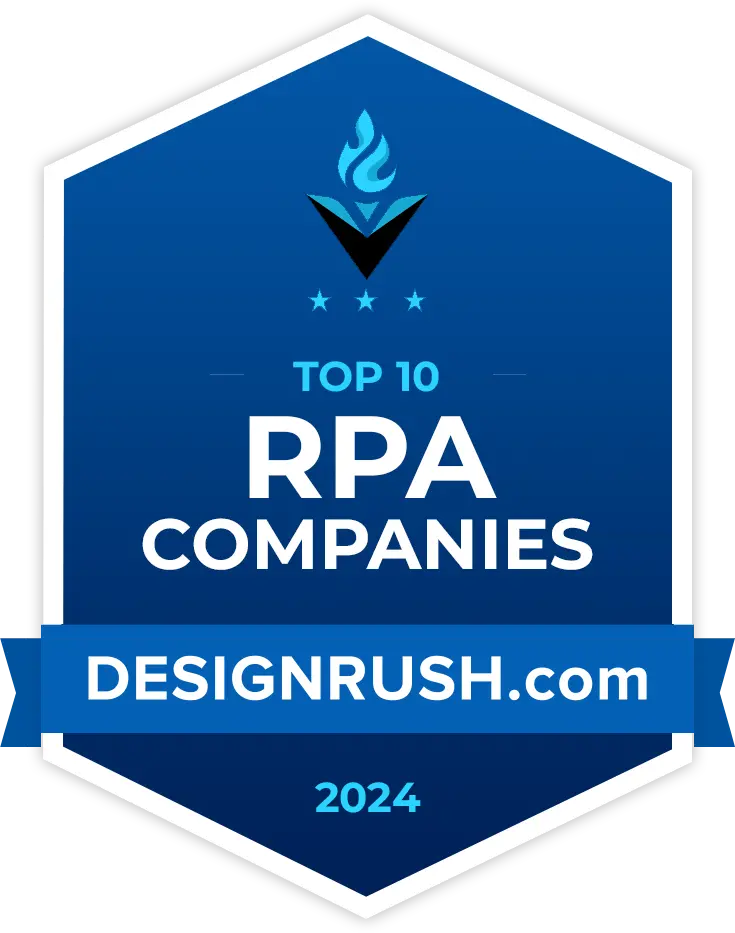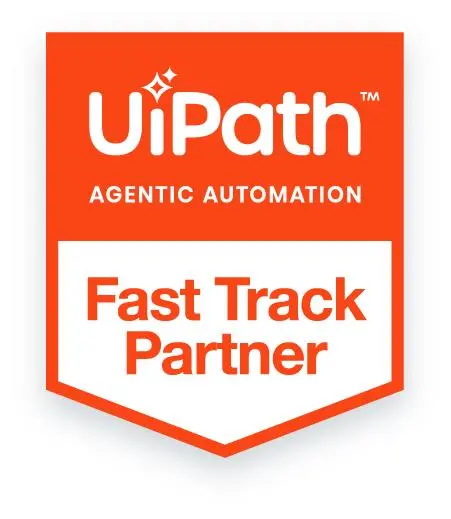
Key Takeaways
- Clearly define the business problem before starting any AI or automation initiative to ensure that efforts are focused on delivering measurable, valuable outcomes aligned with strategic goals.
- Understand and mitigate risks involving data privacy, ethics, and regulatory compliance to build stakeholder trust and avoid legal or reputational damage.
- Evaluate total costs—including implementation, training, and support—and present a realistic, data-backed ROI to gain board approval and long-term buy-in.
- Invest in talent development, internal upskilling, and strategic hiring to ensure the organization has the capabilities needed for successful AI and automation execution.
- Communicate changes transparently and support employees through training and role evolution to foster a positive culture and reduce resistance to technological transformation.
A number of industries are gaining interest in learning about automation and artificial intelligence as enterprises have become more competitive and digital than ever before. One primary reason is that these technologies promise innovation, savings, and efficiency. Nevertheless, they also come with challenges that companies should monitor.
Several questions arise when a leadership team presents artificial intelligence or automation plans to the board. Are these questions challenging, or should they be taken for granted? All the questions are paramount to understanding technology. Additionally, they are essential to ensure that company initiatives align with their long-term goals.
This blog will examine the top five questions board members typically ask about AI and automation and explain why these questions matter.
Also read: How to Train Your AI Chat Agent on Domain-Specific Knowledge Safely?

Question 1: What Business Problem Are We Solving With AI or Automation?
Before launching any AI or automation project, the first and most important question is: What problem are we trying to solve? Too often, organizations jump on the AI bandwagon just to stay trendy or “innovative.” But successful initiatives are driven by purpose, not hype. Board members, executives, and stakeholders seek clear justification—measurable value that aligns with business goals.
At its core, AI and automation should be tools to address specific pain points. This could mean solving a persistent issue in customer service, like long wait times, or easing internal challenges such as repetitive tasks in accounting. If the technology doesn’t directly improve how your business operates or customers experience your service, it’s likely not worth the investment.
Boards typically want to know how this initiative will translate into a tangible business impact:
- Is this solving a pain point for customers or employees? For instance, can a chatbot reduce the burden on support teams and improve response times?
- Will it improve efficiency, reduce costs, or boost revenue? Automation might save thousands of hours annually, while AI could uncover insights that lead to new sales opportunities.
- Have we explored simpler alternatives? Sometimes, a process tweak or better training could solve the issue without high-tech intervention.
These questions help ensure that the solution isn’t more complex than the problem itself. It’s essential to avoid overengineering—if a manual workaround or minor software upgrade can achieve similar results, that should be considered.
Tip for leaders: Always connect your AI or automation effort to a clear, specific outcome. For example, say, “We want to use intelligent automation to cut invoice processing time in finance by 40%,” or “We aim to use AI to analyze customer feedback and reduce churn by 15%.” This sets expectations and shows that your team is focused on results, not just technology.
Overall, start with the problem, not the tool. Define the value you’re targeting. Only then will we assess whether AI or automation is the right approach. When aligned with business needs, these technologies become powerful enablers of growth, efficiency, and innovation.
Question 2: What are the risks, especially regarding data and compliance?
As organizations use AI and automation more widely, boards are right to be concerned about risks, especially data privacy, ethics, and regulatory compliance. These technologies often rely on large amounts of sensitive data, like customer records, financial information, or employee details. If this data is misused or not appropriately protected, it can lead to serious consequences such as legal penalties, damaged reputation, and loss of customer trust.
One of the most common questions boards ask is: Are we complying with data protection laws like GDPR, HIPAA, or other local regulations? These laws are strict and constantly evolving. They require companies to handle personal data carefully—only collecting what’s needed, storing it securely, and ensuring it’s not used in ways people didn’t agree to. A single mistake, like a data breach or unauthorized use of data, can result in hefty fines and public backlash.
Another primary concern is ethical data use. Boards want to know: Are we using customer and employee data fairly and transparently? AI systems can make decisions automatically, like approving a loan or selecting job candidates. If these systems are trained on biased or incomplete data, they can make unfair choices, often without people realizing it. This can harm individuals and lead to accusations of discrimination or unethical behavior.
There’s also the issue of bias in automated decisions. AI doesn’t think like humans; it learns from the given data. If that data contains hidden biases, the AI might reinforce them. For example, if past hiring decisions favored a particular group, the AI might continue to do the same. Boards want to know: How are we detecting and reducing bias in our systems?
Tip for leaders: Be proactive. Show that you’ve thought about these risks from the beginning. Build a strong data governance framework—this means having clear rules for how data is collected, stored, and used. Establish ethical use policies to guide your AI projects. Implement controls like regular audits, human review of automated decisions, and explainability features that show how AI made its choices.
In short, responsible use of AI and automation isn’t just about technology—it’s about trust. Addressing these risks early and clearly gives the board (and your customers) confidence that your AI initiatives are safe, fair, and compliant.
Question 3: What’s the Total Cost and Expected ROI?
When proposing an AI or automation project, the board will ask: What will this cost, and what do we get in return? Boards are responsible for ensuring the company spends wisely, so they want a complete picture of the investment, not just the price of the software or tools, but everything it takes to make the project work.
This includes:
- Upfront investment: These are the initial costs for AI tools, automation platforms, infrastructure, and external vendors or consultants.
- Implementation costs include setting up the system, integrating it with your existing processes, and making it work across teams.
- Training: Employees need to learn how to use new tools. That means time, training sessions, and sometimes hiring new staff.
- Ongoing support and maintenance: AI systems aren’t “set it and forget it.” They need updates, monitoring, and possibly retraining over time.
The next big question is: How long before we see value? Boards want to know when the investment will start paying off. Some benefits, like saving time by automating a manual task, may be visible quickly. Others, such as improving customer satisfaction or gaining insights from AI analytics, might take more time to measure.
So, how do we measure Return on Investment (ROI)?
You need to explain how success will be tracked. This could include:
- Reduction in time or effort spent on a task
- Lower error rates
- Increased revenue or sales opportunities
- Cost savings from fewer manual processes
- Better customer or employee experience
It’s essential to be realistic here—don’t overpromise. AI and automation deliver great value when done right, but they’re not magic. Show that you understand both the short-term impact and the long-term potential.
Tip for leaders: Prepare a simple cost-benefit analysis. Use numbers where possible. For example: “This automation will reduce invoice processing time by 60%, saving 2,000 hours per year, which translates to $150,000 in cost savings.” Also point out strategic benefits, like the ability to scale operations without adding more staff, or making faster and smarter decisions through AI insights.
The gist is that boards want confidence that the project is worth the money. By showing a clear understanding of total costs and a realistic path to ROI, you make it easier for them to say yes.
Question 4: Do We Have the Right Talent and Skills?
When it comes to AI and automation, having the right tools is only part of the equation. The real key to success is having the right people. Boards understand this and will want to know whether your organization has the skills and talent needed to build, run, and continuously improve these systems. Without the proper expertise, even the best technology can fail.
The board may ask: Do we have the internal expertise to handle this, or are we depending entirely on outside vendors? While working with technology partners or corelyingsky is common, relying on them long-term without building internal knowledge is risky. If the vendor leaves, who will manage the system?
AA critical question: What training do we need for our existing staff? Many organizations already have talented employees who need proper training to take on new roles in automation or AI. For example, business analysts can learn how to work with process automation tools, or data analysts can be trained in AI model interpretation. Upskilling your team builds internal strength and also improves morale and retention.
Boards will also want to know: Are we building these capabilities internally, or outsourcing everything? There’s no one-size-fits-all answer. Some outsource complex tasks like data science or AI model development, especially initially. Others invest in building in-house teams over time. The important thing is to have a clear talent strategy and to show that you’re thinking ahead.
Tip for leaders: Be prepared to share your approach to talent. This could include:
- Hiring plans for key roles like AI engineers, automation developers, or data analysts
- Partnerships with consulting firms, universities, or training providers
- Internal training programs or certifications to upskill existing employees
- Creating cross-functional teams that blend business knowledge with technical skills
For example, you might say, “We’re working with a trusted vendor to launch the initial phase, but we’ve also identified internal team members for training and are hiring two automation specialists to build our long-term capabilities.”
In summary, boards want to know that your AI and automation projects are sustainable. You can build confidence and ensure long-term success by being able. You inform success by showing you have the right people or a solid plan.
Question 5: How Will This Affect Our People and Culture?
When introducing AI and automation into an organization, you must understand that you’re not just changing tools or processes—you’re changing how people work. These changes can lead to new opportunities but also create uncertainty, fear, or even resistance. Boards are increasingly aware of this and will want to know how these shifts are being handled.
A common concern is: Will jobs be lost or changed significantly? The truth is, AI and automation may eliminate some repetitive tasks or even entire roles. But they also create new roles—like automation specialists, data analysts, and AI trainers. Many existing jobs may be reshaped rather than removed, with employees taking on higher-value, more strategic tasks. Boards want reassurance that the impact on people has been thought through carefully.
Another question they’ll ask is: How are we communicating with employees? Good communication is key. If employees are left in the dark, rumors and fear can spread quickly. Being transparent about why it’s happening, how it’ll affect teams, and what support is available helps build trust. Employees are more likely to embrace change if they understand the purpose and feel included in the journey.
Boards will also want to know: What’s the plan for managing this cultural shift? Automation and AI can make companies more efficient, but they can also create tension if people feel like they’re being replaced rather than empowered. Leaders must create a culture where technology is seen as a tool that helps people do their jobs better, not one that replaces them.
Tip for leaders: Be upfront about the changes AI and automation will bring, and show that it is central to the core of your strategy. Share your change management plan—this could include:
- Regular updates and open forums for employee questions
- Training programs to help staff adapt and grow into new roles
- Career development paths that show a future beyond automation
- Support systems for teams going through significant changes
For example, you might say, “We’re introducing automation in our finance team, which will reduce manual data entry. But we’re also retraining team members in data analysis and system operations roles, and we’ve launched a communication series to keep them informed.”
In short, boards want to know that AI isn’t just about cutting costs—it’s about creating a more innovative, resilient workforce.
Final Thoughts
AI and automation can be powerful tools, but they must align with the company’s goals, values, and risks. Boards ask tough, essential questions to protect the company’s long-term future.
If you’re planning an AI or automation initiative, prepare to answer these five core questions, which will build trust and strengthen your case for investment and support.
Remember: AI and automation are not just technical projects—they are business transformations. Every board wants to ensure that those transformations are smart, safe, and strategic.








